Moderate overlap front: original test
Rating applies to 2004-07 models
Tested vehicle: 2004 Chevrolet Malibu LS 4-door
The Chevrolet Malibu was redesigned for the 2004 model year. The earlier design remained in production through the 2005 model year, but was called the Chevrolet Classic and was sold only to fleets.
| Evaluation criteria | Rating |
|---|---|
| Overall evaluation | |
| Structure and safety cage | |
| Driver injury measures | |
| Head/neck | |
| Chest | |
| Leg/foot, left | |
| Leg/foot, right | |
| Driver restraints and dummy kinematics | |

Action shot taken during the frontal offset crash test.
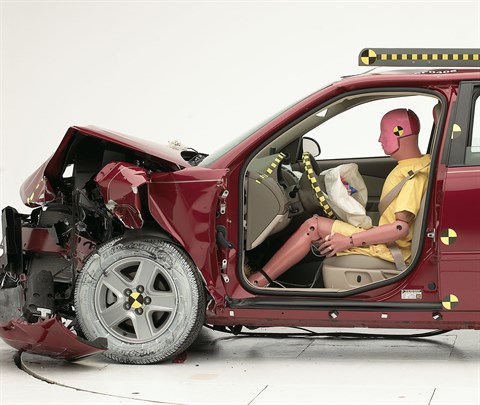
The dummy's position in relation to the steering wheel and instrument panel after the crash test indicates that the driver's survival space was maintained very well.

A high head acceleration occurred when the dummy's head bottomed out the airbag and hit the steering wheel.

Forces on the right foot were just high enough to indicate the possibility of injury.
Side: original test
Rating applies to 2005-07 models
Tested vehicle: 2005 Chevrolet Malibu LS 4-door with optional front and rear head curtain airbags and optional front seat-mounted torso airbags
The Chevrolet Malibu was redesigned for the 2004 model year. The earlier design remained in production through the 2005 model year, but was called the Chevrolet Classic and was sold when new only to fleets.
Two previous tests of a 2004 Malibu were conducted, one with an optional side curtain airbag for the driver and rear passenger, and one without. In 2005-06 models, side airbags designed to protect drivers' and front passengers' torsos were added to the optional side curtain airbags previously available. In 2007 models, the side curtain airbags became standard, but the side torso airbags remained optional.
The three tested vehicles are rated separately, except that structure ratings for the vehicles are based on the two previous tests plus the latest test. Also, the rear passenger injury and head protection ratings are based on the two tests with side airbags.
| Evaluation criteria | Rating |
|---|---|
| Overall evaluation | |
| Structure and safety cage | |
| Driver injury measures | |
| Head/neck | |
| Torso | |
| Pelvis/leg | |
| Driver head protection | |
| Rear passenger injury measures | |
| Head/neck | |
| Torso | |
| Pelvis/leg | |
| Rear passenger head protection | |
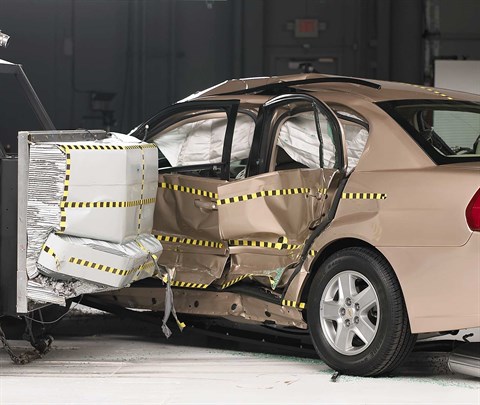
View of the vehicle and barrier just after the crash test
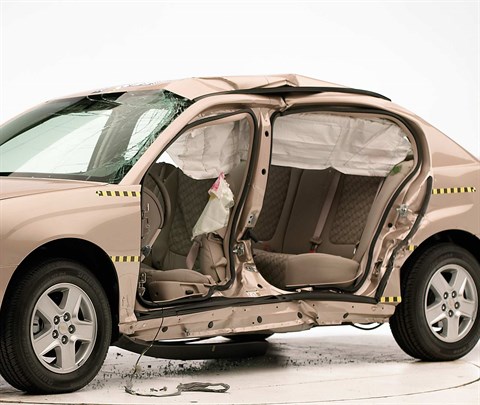
View of the vehicle after the crash with doors removed, showing the side airbags and damage to the occupant compartment
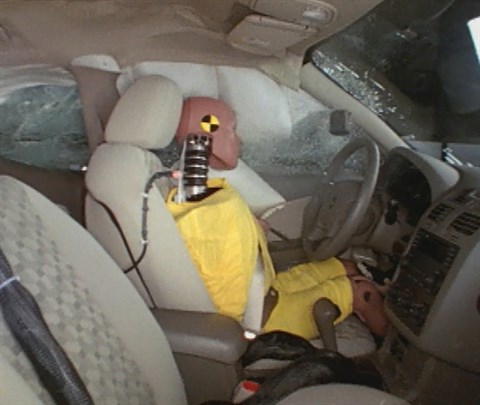
Action shot taken during the side impact crash test showing the driver dummy's head was protected from being hit by hard structures by the side curtain and side torso airbags
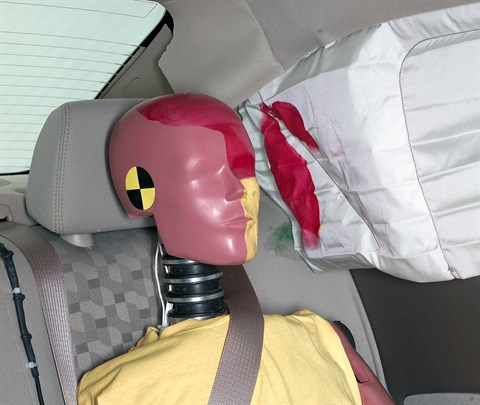
Smeared greasepaint shows where the rear passenger dummy's head was protected by the side airbag.
Head restraints & seats
Seat type: All seats
| Overall evaluation | |
|---|---|
| Dynamic rating | |
| Seat/head restraint geometry |
About the head restraint & seat test
Currently, IIHS tests apply only to front seats.
